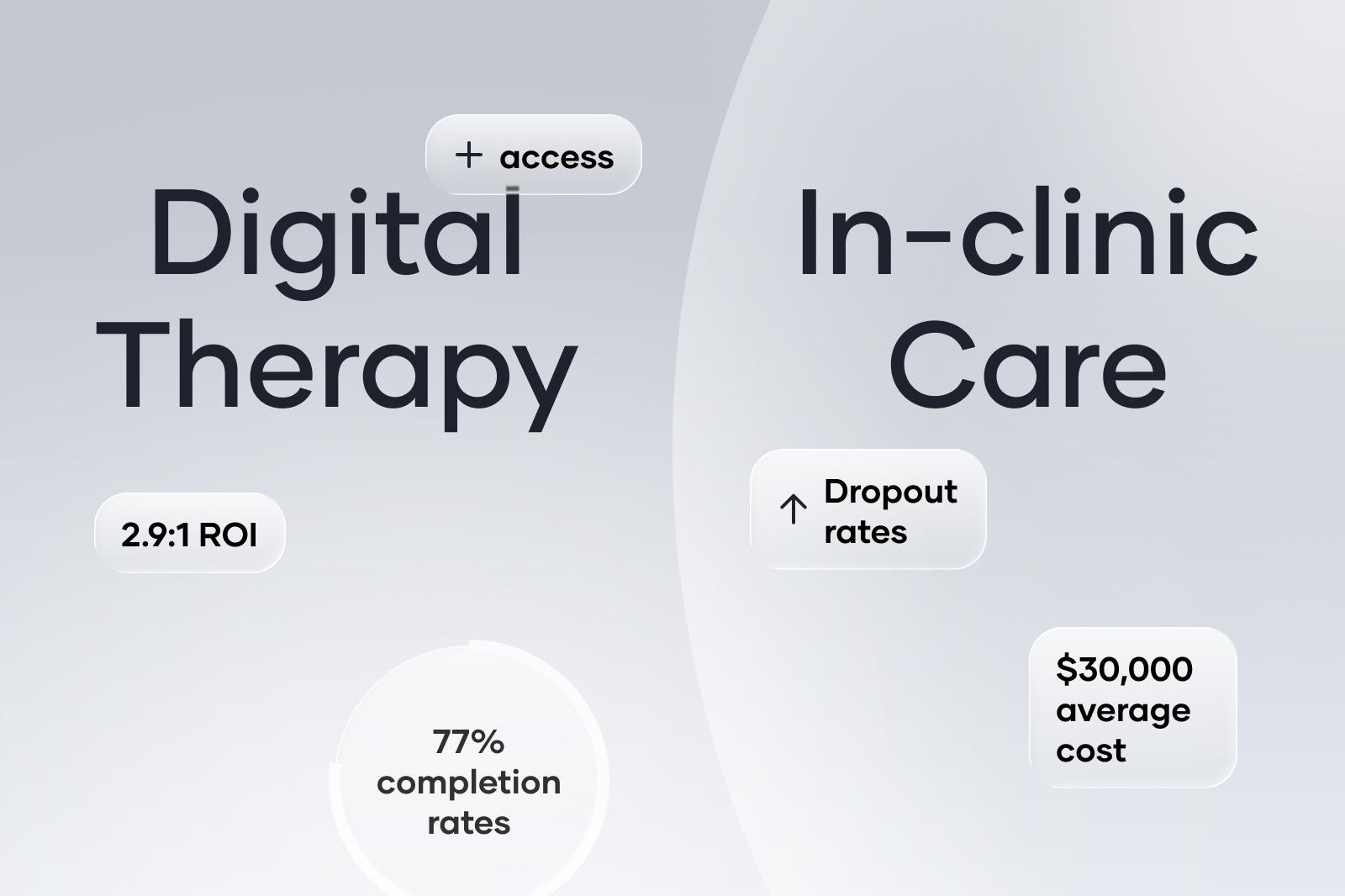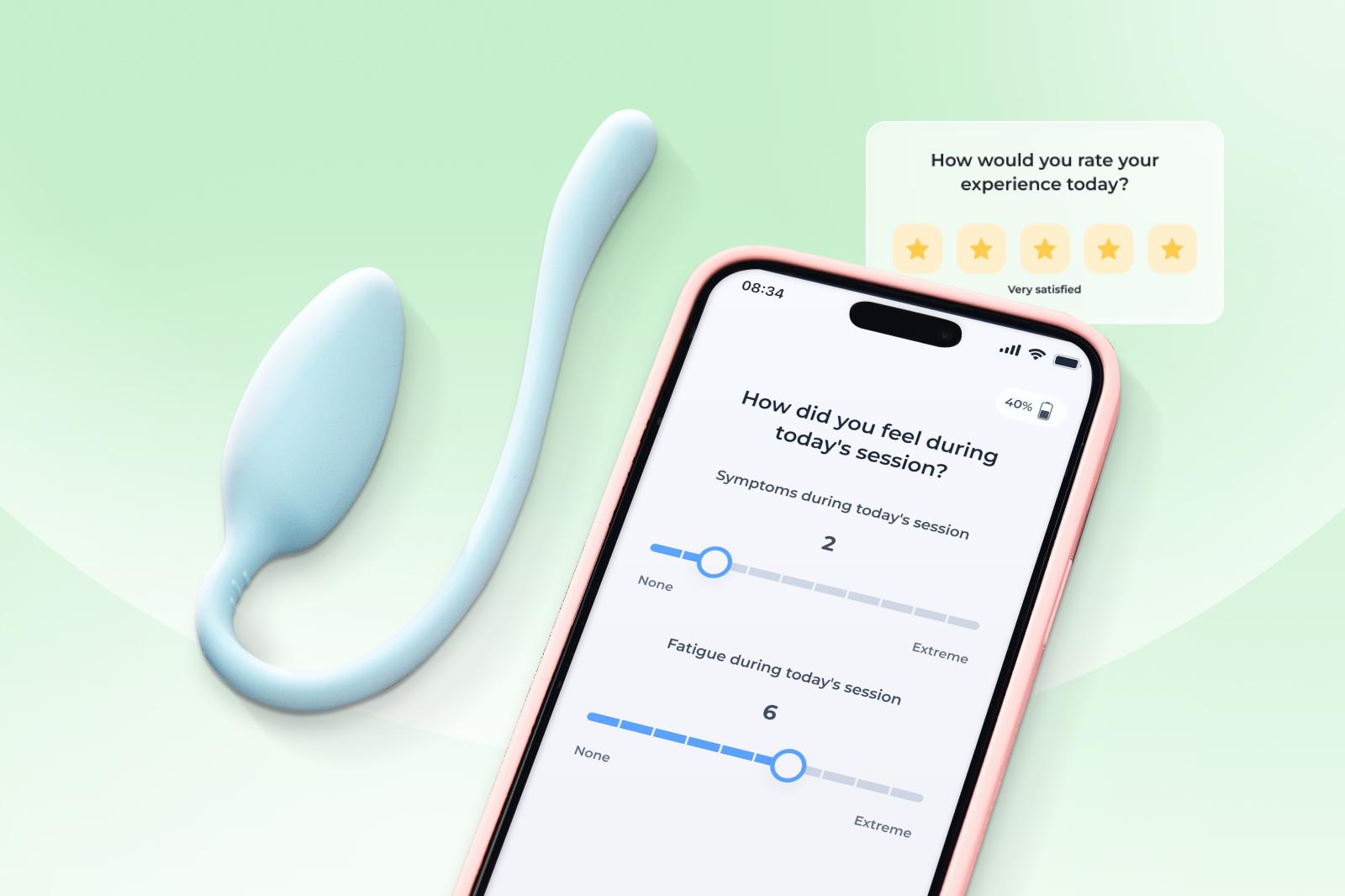Latest articles
Fresh healthcare insights

Mapping MSK insurance models for employers to lower healthcare costs
Musculoskeletal (MSK) conditions are a top cost driver in employer health plans, yet most coverage conversations stop at “does the plan cover physical therapy?” While that’s important, it only scratches the surface. Employers have more strategic levers available with a number of different MSK insurance models available for consideration. These structures can determine whether you’re paying for waste or investing in real healthcare outcomes. This article explores how different MSK insurance models work, what they mean for employer costs, and how value-based options can unlock ROI without cutting care. You’ll get seven proven strategies that employers can use to reduce healthcare costs without cutting benefits. From smarter plan design to digital-first care models like Sword Health, we’ll explore how to lower spend, improve outcomes, and deliver more value to your workforce. Healthcare costs are climbing, and employers are feeling the strain. U.S. health insurance premiums for employer-sponsored plans jumped 7% in 2024, reaching more than $24,000 for a family plan¹.
October 24, 2025 • 14 min read

MSK Employee Health 101
Musculoskeletal (MSK) health is a critical driver of employee wellbeing and organizational performance. It includes a range of conditions that affect muscles, bones, joints, and connective tissues, from back pain and arthritis to post-surgical recovery needs. The numbers show why this matters. At an estimated 381 billion dollars annually1, MSK disorders are the number one driver of healthcare costs in the United States, exceeding cancer and mental health combined. Nearly half of U.S. adults experience an MSK condition each year, with prevalence rising to nearly three out of four among adults over 652. This statistic alone emphasizes how important MSK employee benefits are for supporting the health of your employees and managing your healthcare cost base. For benefits leaders, MSK employee health is more than a cost category. It is a strategic opportunity to improve retention, boost productivity, and control healthcare spending. Addressing these conditions early and effectively can reduce claims, strengthen workforce resilience, and enhance total wellbeing, making it essential to any modern employee benefits strategy.
October 24, 2025 • 6 min read

Sword researchers publish first-ever systematic review evaluating the effectiveness of digital physical therapy
In the first-ever systematic review of its kind, Sword Health researchers showed that asynchronous telerehabilitation with biofeedback (known more broadly as digital physical therapy) is effective in improving pain and function in patients with musculoskeletal (MSK) conditions. Keep reading to learn about the peer-reviewed study, published in Digital Health. The term describes the digital health care delivery model of live video conferencing between physical therapy provider and patient
October 24, 2025 • 4 min read

Pelvic Organ Prolapse: From Symptoms to Solutions
Pelvic organ prolapse (POP) is a disorder in which the muscles and tissues of the pelvic floor can no longer adequately support the pelvic organs and they drop down or press into the walls of the vaginal canal. Three different types of POP are outlined below. These are named based on the pelvic organ that is descending. POP prevalence increases as a woman ages. In fact, 74% of women between 40-59 have POP.
October 24, 2025 • 9 min read

What is MSK?
The MSK medical abbreviation refers to the medical term: musculoskeletal. Let's start with a simple definition of "musculoskeletal", focusing on the medical meaning of MSK. Our musculoskeletal (MSK) system is made up of bones, muscles, and joints that are connected through tendons, ligaments, and soft tissues. The musculoskeletal system is what helps you move, sit, and stand. Musculoskeletal conditions or MSK disorders are injuries that affect your muscles, bones, and joints. MSK disorders are sometimes referred to as “MSDs” and can affect any part of the musculoskeletal system. Note the term "musculoskeletal diseases" is sometimes used but isn't accurate.
October 24, 2025 • 5 min read

Physiotherapy vs. physical therapy: What’s the difference?
Simply, yes. There is no difference in practice between physiotherapy and physical therapy outside terminology. Each term is just more preferred in different locations. When you’re looking for a physical therapist or a physiotherapist near you to book an appointment for pain or injury recovery, it can be confusing. If you have wondered what the difference is between physiotherapy and physical therapy, we have you covered. In most cases, the terms are used interchangeably. But behind the language are decades of evolving practices and a shared commitment to helping people move better, feel stronger, and live with less pain. Understanding the origins, similarities, and applications of physiotherapy and physical therapy can help you make smarter, more informed decisions about your health. Let's explore how the terms developed, what they mean today, and how to choose the right kind of care based on your needs. The practice of using movement and manual techniques to treat illness and injury dates back thousands of years, but the modern professions of physiotherapy and physical therapy began to take shape in the late 19th and early 20th centuries.
October 24, 2025 • 10 min read

Reduce MSK costs with more effective digital MSK care plans
You’ve likely seen numerous digital health solutions that promise to lower medical spend. You’ve probably zeroed in on the top conditions with significant digital solutions in the marketplace: musculoskeletal (MSK), mental health, and diabetes. For most companies, prioritizing MSK care over other digital health solutions will drive the biggest benefits for your employees and your bottom line when it comes to savings. Given the multitude of vendors, platforms, and solutions available, prioritization can be a daunting task. How do you choose from among the thousands of digital health tools? What combination of condition focus and solution selection will drive the best outcomes for your population and the biggest return for your business?
October 24, 2025 • 5 min read
For employers
Workplace health advice
How Digital Physical Therapy Improves Employee Retention
Did you know that fear of pain can be more disabling than pain itself? Chronic pain and employee turnover prevention are critically linked, but with the right MSK benefits coverage, employers can help their team members recover from pain to increase workplace productivity. Nearly 28% of people in the workplace will take leave for MSK pain over the course of a year. Patients who suffer the two most common conditions of low back and neck pain have an average return to work of 7 days. Overall, MSK conditions are responsible for 44 missed work days each year on average.
October 24, 2025 • 6 min read
How to evaluate and select the best digital MSK vendors
Musculoskeletal (MSK) disorders are one of the most expensive and under-addressed cost centers facing U.S. healthcare providers. MSK disorders affect 1 in 2 Americans and cost over $190 billion per year, more than heart disease, cancer, or mental health conditions. For employers and health plans, MSK claims are often among the top 3 cost drivers. And for members, chronic pain reduces quality of life, drives absenteeism, and often leads to costly downstream interventions. That’s why digital MSK solutions have surged in popularity. The promise is compelling: better access, which drives stronger engagement, delivers better outcomes, and therefore lowers overall healthcare costs.
October 24, 2025 • 6 min read
Reduce MSK costs with more effective digital MSK care plans
You’ve likely seen numerous digital health solutions that promise to lower medical spend. You’ve probably zeroed in on the top conditions with significant digital solutions in the marketplace: musculoskeletal (MSK), mental health, and diabetes. For most companies, prioritizing MSK care over other digital health solutions will drive the biggest benefits for your employees and your bottom line when it comes to savings. Given the multitude of vendors, platforms, and solutions available, prioritization can be a daunting task. How do you choose from among the thousands of digital health tools? What combination of condition focus and solution selection will drive the best outcomes for your population and the biggest return for your business?
October 24, 2025 • 5 min read
Tackling the #1 driver of employers’ health costs: MSK
The phrase ‘musculoskeletal disorder’ may not ring a bell — but the feeling might. The term refers to any type of pain in the muscles or joints, from chronic pain to injuries to post-surgical pain. Many of us have suffered from a musculoskeletal (MSK) issue at some point in our lives. In fact, one in two Americans is struggling with an MSK condition right now. And it’s causing economic ripples, especially in the workplace.
January 20, 2020 • 6 min read
Expert guidance
From the experts: Ask a physical therapist

Ask a PT: when is the best time to do my exercises?
Before I joined Sword Health, I worked in brick-and-mortar clinics. I never worked weekends, and rarely worked past 6 pm. My schedule was great...for me. But for my patients, it was a real challenge. Attending a physical therapy appointment might require leaving work early or slipping out at lunch. Even patients with more flexible schedules would sometimes lament about finding childcare or arranging transportation. A thirty-minute appointment could easily take an hour or even 90 minutes once travel was taken into account. When I was in a clinic, the “best” time for a patient to do their exercises was the time that worked for me, not for them. Sword's virtual model gives our members the power to do their exercises when AND where it's most convenient for them. Now that I work remotely for Sword, I’m able to help our members figure out the best time to do their exercises at home. Now, when my members ask me when they should do their exercises, I tell them - the best time is when you’ll actually do them!
February 11, 2021 • 6 min read

Ask a PT: Does walking really help with pain?
If you’ve ever stood on the sidelines of a sporting event, you’ve likely witnessed many falls, trips and tackles. Whether the players are small children or professional athletes, the advice from the coach may have simply been to “walk it off.” While that is not always the best solution after an acute injury, walking can be a really effective way to manage chronic pain. Motion is lotion. Movement increases blood flow, which brings nutrients to our tissues. It also helps those that don’t have blood flow, like cartilage. Cartilage lines our joints, absorbing impact. It’s surrounded by a liquid which provides it with nutrients, flowing in and out of it like a sponge. Exercise, like walking, causes loading that fills and squeezes that sponge, particularly in the joints of our legs and spine.
August 13, 2020 • 5 min read

Ask a PT: What Is Causing My Shoulder Pain?
When your shoulder hurts, it can be difficult to tell exactly what’s gone wrong. You’ve probably heard of pinched nerves and rotator cuff tears. Perhaps you’ve also heard about shoulders being ‘impinged’ or ‘frozen.’ It’s not easy to keep these various shoulder conditions straight, especially when they all cause similar pain symptoms. The first step towards fixing a problem is identifying it. This article, written by a team of Doctors of Physical Therapy, is designed to help you figure out what’s causing your shoulder pain — so you can begin the process of healing it. We will dive into the five most common causes of shoulder pain and how to differentiate them. Cervical refers to the neck, and radiculopathy is pain that radiates to another body part. Hence, cervical radiculopathy: a pinched nerve in the neck, which can cause radiating pain affecting the shoulder. It occurs when the cervical spine becomes damaged due to sudden injury or degeneration over time, and squeezes or puts pressure on a nearby nerve.
November 1, 2023 • 6 min read
Healthcare contributors
Meet Sword's expert authors

Dr. Vijay Yanamadala, MD, MBA, FAANS
Chief Medical Officer at Sword Health

Dr. Fernando Correia, M.D.
SVP Clinical & Regulatory Affairs at Sword Health

Megan Hill, PT, DPT
Director, Clinical Specialists

Morgan Hollis, MS, RDN
Head of Clinical Strategy, Sword Move

Jennesa Atherton
Head of Clinical Affairs, Sword Bloom

Liz Santo
Senior Clinical Program Manager, Sword Bloom ·







